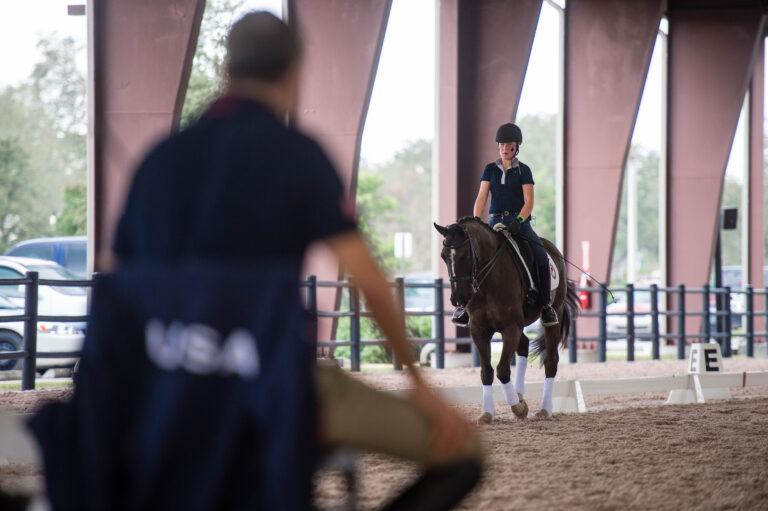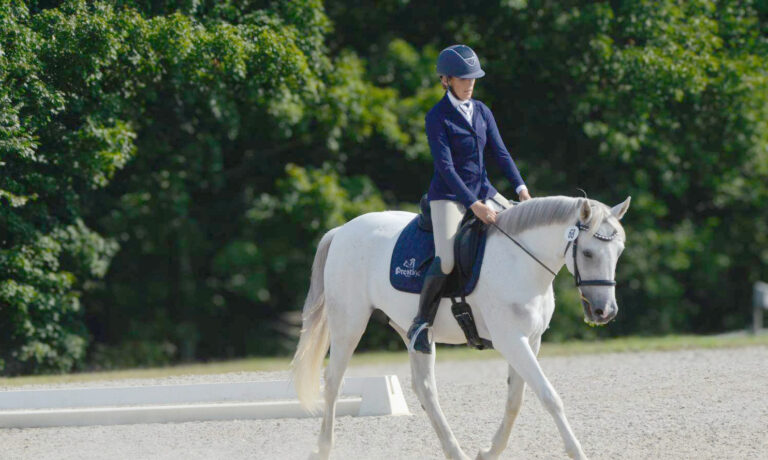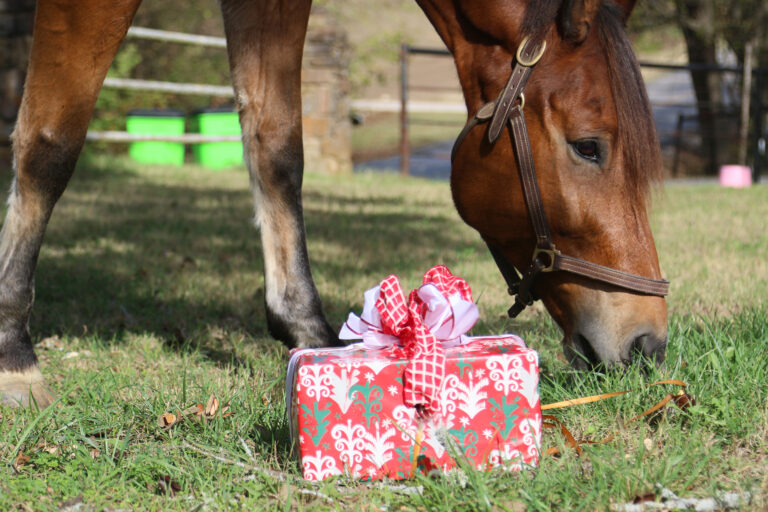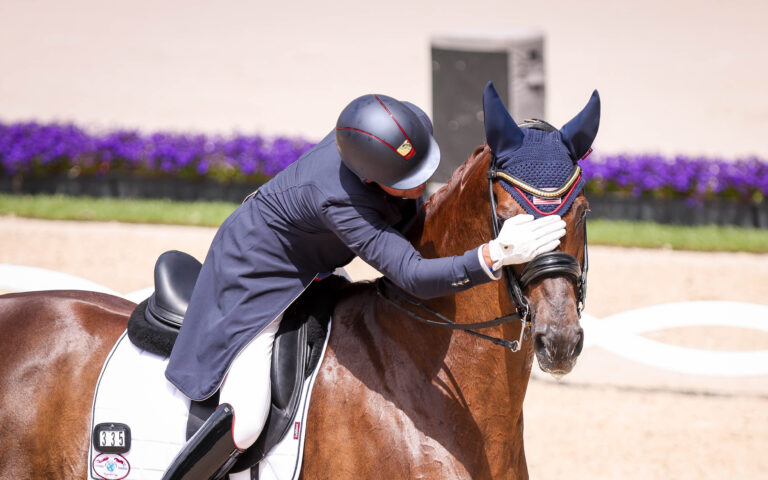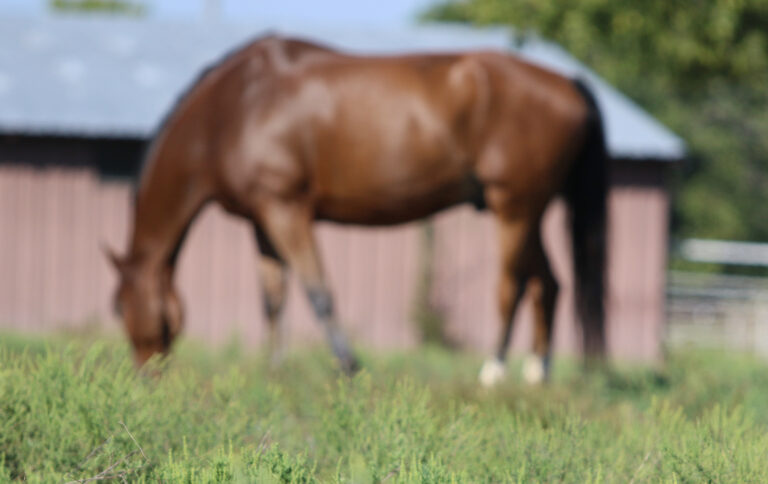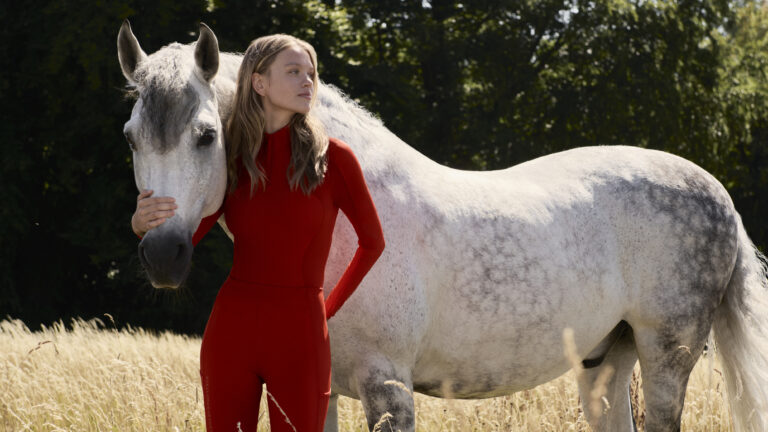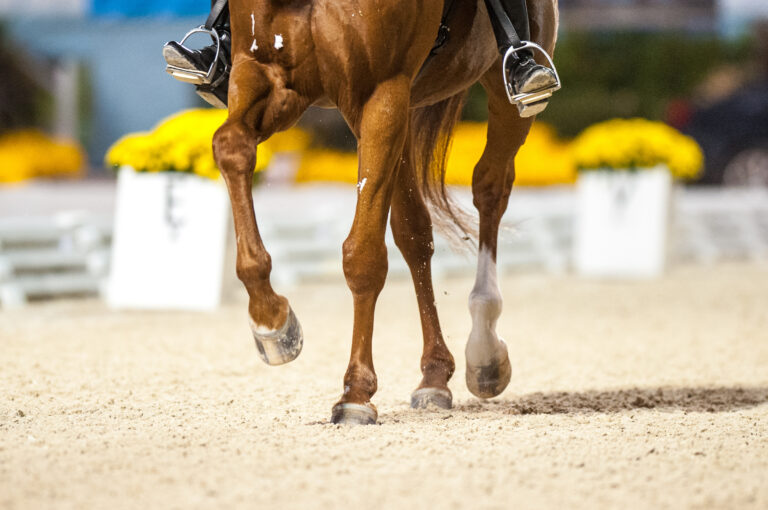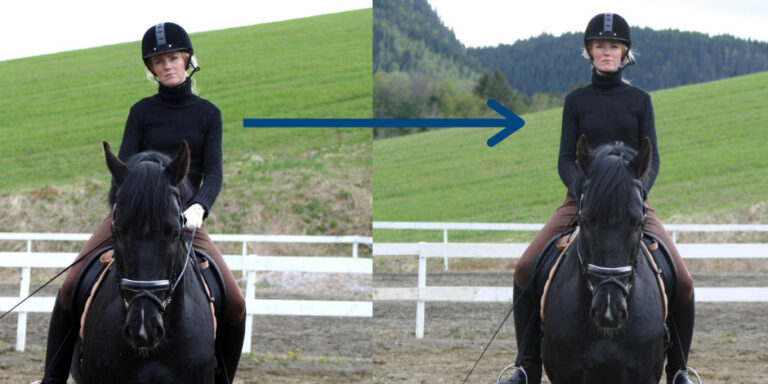Donnerluck (“Donner”) was born in 1994 to be a star. He is a Rheinlander by Donnerschlag, out of Weltdame, and is the grandson of Donnerhall and Weltmeyer. In 1998, he was imported as a 4-year-old stallion from Germany. In his prime, he earned high scores through the FEI Prix St. Georges and Intermediaire levels, and his offspring have done exceptionally well in the hunters, eventing and dressage, including a son competing at the Grand Prix level. Donner’s heartbreaking story, however, shows how quickly a horse’s life can change from bliss to despair. I was a young rider with big dreams from a small town in Pennsylvania when destiny brought us together at a low point in Donner’s life and changed our lives forever.
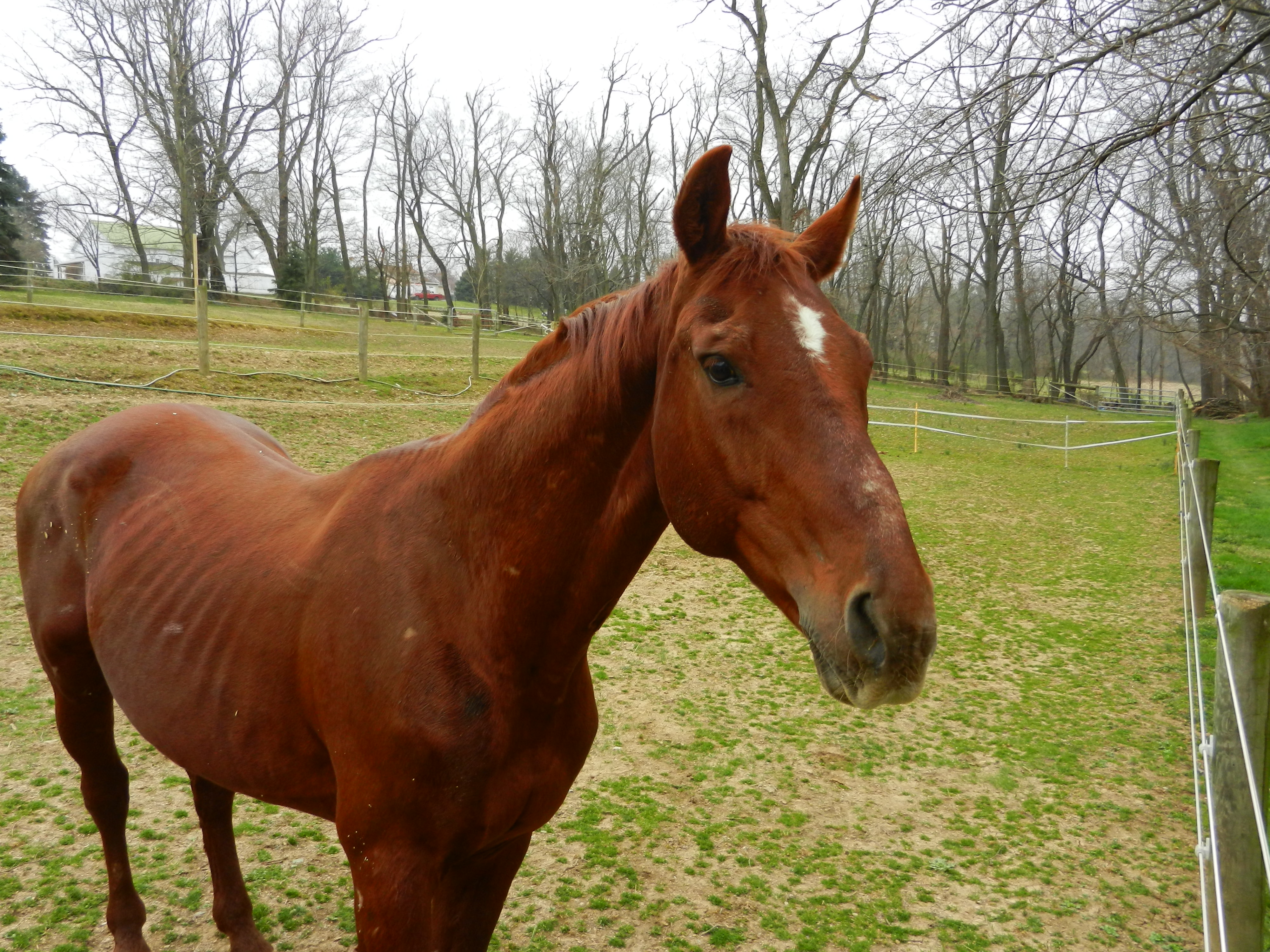
A Turn for the Worse
Long before I met Donner, his original importer trained him from a young horse to a gifted FEI horse. Donner was supposed to have been her partner of a lifetime until, tragically, a family health crisis in 2007 required her to sell him and postpone her dressage dreams. She found what seemed like the perfect home for Donner, where he would stay in a full dressage training program, compete and continue to breed. That scenario held true only for one show season and then life changed. His new owner sent him from Washington state to the Carolinas to stand at stud and this is where the story becomes fuzzy. One thing is for certain, his life took a horrific turn. Board bills went unpaid and eventually the farm that was breeding him gained legal ownership due to the debt incurred. The farm decided to sell him through an online sheriff’s auction to recoup the board money that had been owed to them over at least a six-month period.
The next person who entered Donner’s life, in October 2011, was a lower-level Adult Amateur dressage rider in Ohio with a small breeding program, who found Donner and saw this as the opportunity of a lifetime for her to acquire a schoolmaster. The sheriff’s auction showed pictures from his stud advertisements and videos of him in the FEI ring when he was at the peak of his performance career. Her trainer promptly agreed this was a phenomenal horse and she should go through with the purchase. When Donner arrived in Ohio, she was in a state of shock and disbelief. How could this be the same animal she saw online? Donner was a skeleton—nothing but skin and bones and approximately 600 pounds underweight. Although this was not the situation she had hoped for, she considered his well-being to be her new responsibility and immediately did everything she could to nourish him slowly back to health.
Discovering Donner
I am a firm believer that where there is a will, there is a way. My parents will be the first to attest to the fact that I am quite willful or, dare they say, stubbornly determined to achieve anything I set out for. I had set my sights on making it into the FEI Young Rider dressage arena, but it was not feasible for my parents to buy me a horse who was capable on our modest budget, and I only had two years until I aged out of the program into the adult and professional ranks. I scoured the Internet daily for possibilities, emailed and called horse owners to see if there was any chance I could work a deal and get a ride on a horse who could help me reach my lofty goals. Then I saw Donnerluck advertised on Warmbloods-For-Sale in March 2012 at an oddly low price for a horse of his abilities and accomplishments, despite being 17 years old. So, of course, I called and then I heard his devastating story. But for some reason, I had a feeling his sad story could become our own happy ending. I told my parents, who are always supportive of my outlandish plans for success. My dad gave me his blessing, helped my mom and I hitch the trailer and sent us on a road trip from Pennsylvania to Ohio. We weren’t certain we would bring him home, but we were prepared to.
My mother and I were full of mixed emotions on that drive: nerves and excitement. We passed the time talking about all of the “what ifs” and calling vets in case we needed a last-minute pre-purchase evaluation. When we finally arrived, we were greeted and taken through the pasture where Donner normally was turned out, back to her small barn. It was a muddy March day and the pasture was deep and soppy, but we trudged through hastily, eager to see what was ahead. It was much worse than we expected. Despite his owner’s best efforts, Donner’s condition was still appalling because he had been so emaciated, though he had already put at least 200 pounds back onto his frame. Additionally, he had kick marks from the mares, no tail due to malnutrition and had just recovered from an infection due to castration complications at age 17. His state was so dire I was not even convinced he was the regal creature from the show videos. It pained me, but I needed to ride him for just long enough to be certain. Within two laps of trot he was coughing and hyperventilating. I did one flying change in 6 inches of mud. He did it without any hesitation. It was him. This was the imported German stallion, the FEI dressage competitor and a horse who was saying he needed me even more than I needed him. We called my dad from the car and both burst into tears. He told us to do what we thought was right, but that if we followed our hearts, we would keep him, no matter what, and there would be no other FEI Young Rider horse. He told us, “We can’t save them all,” but we thought we could save this one. I could barely get the words to leave my lips to tell his owner we wanted to take him to his new forever home.
Coming Home
Donner spent his first six months with us doing nothing but eating in a big grassy field with new friends. He would get very “hangry’”when it was grain time, but we understood his fear that any meal might be his last based on his previous experiences. Over the next six months, he came to college with me at Penn State University. I spent my study breaks getting to know him at the barn. We spent hours together trail-riding through the mountains and doing gallop sets to build up his strength and stamina around the farmer’s field. By the end of the fall semester of 2012, his body was prepared to return to dressage work.
Training Challenges
I crammed 21 credits worth of classes into half of a week so I could go home every Friday through Monday to work for my trainer and take lessons. And every weekend, I would leave the barn crying. I was prepared for this journey to be difficult, but not like this. Donner had no diagnosable ailments, but acted as if it was impossible for him to go forward, to the point that he even tried to lie down at the mounting block when I simply asked him to walk forward. Whether we tried a light and clear or firm and crisp aid, he would crawl slower into a halt, then stand and kick out his hind leg or fly backward around the arena. All I wanted was to communicate with him. It crushed me to be so at odds with him. We were supposed to be partners. I was supposed to help him recover and he was supposed to help me to become a better rider. As we all know, horses often have a plan of their own, and Donner clearly wanted to teach me a few other lessons about horsemanship along the way.
We moved him back to his grassy field with friends for the summer and stayed out of the arena as much as possible. I tried to remind him of our fun days galloping in the fields whenever he got frustrated with his work. I had to keep the sessions short and be 100 percent accountable for the accuracy of my aids in order for him to accept the cues. When we arrived at our first show, the old habits began again. We had a few unruly warm-ups and one time we even had to be led out of the arena because he adamantly refused to walk forward anymore. It was a longer and rougher road than expected, but with time and patience, our issues slowly sorted themselves out and we became a respectable Fourth Level pair by the fall of 2013.
An Unorthodox Program
For me, 2014 was a year of new beginnings and exciting changes. I packed my bags and horses to head to Wellington, Florida, for the winter show season! I now better understood Donner’s needs and demands to stay happy in his work. He had to have an unorthodox training program to appease his mind even though his body was capable. We did all of our schooling around the canal banks and he only had to go into the arena for 15 minutes of work the entire week. We hacked to shows, went on a jaunt around the grounds and straight down centerline. We did whatever it took to keep him happy, and it paid off. At my first show as a professional, in the FEI arena in Wellington, we earned our two scores needed to finish my USDF silver medal. It was a dream come true and a huge accomplishment to aid in my future as a dressage trainer and instructor.
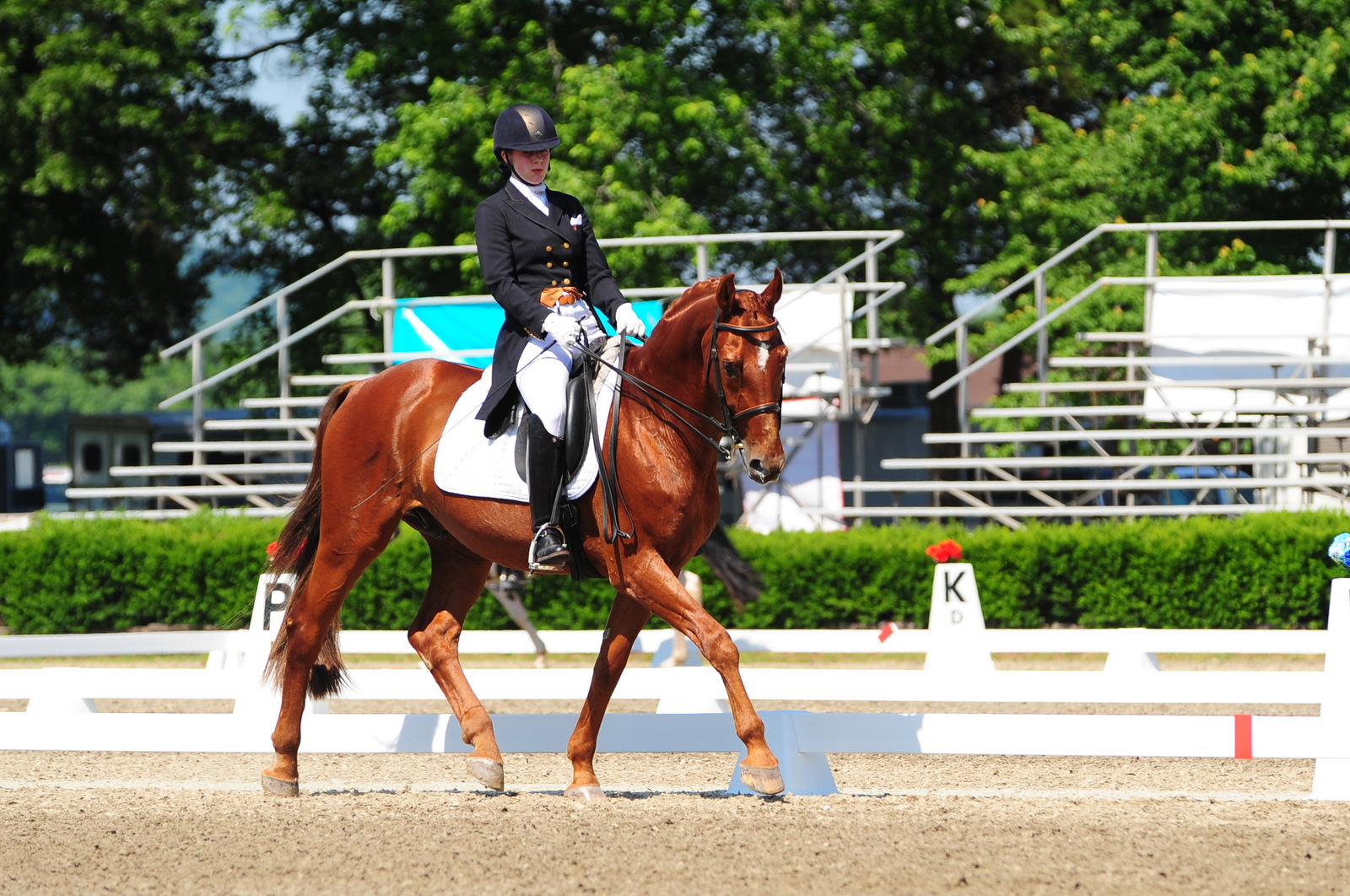
My next goal for the season was to complete our USDF silver freestyle bar. His owner from Ohio who had rescued him is very musically inclined and offered to create his musical freestyle compilation. I felt blessed that she still wanted to be a part of our journey. The emotion of the music emulated the later years of his life, starting with a dark undertone and finishing bright, powerful and strong. I was overwhelmed by this sentimental piece and the judges seemed to appreciate it. Not only did we earn our USDF silver freestyle bar, but we also competed at the USDF Region 1 Championships and earned a wild card invitation to the inaugural U.S. Dressage Finals.
At this point, Donner had already taken me further than I had hoped, but he seemed to have even more to offer. With the two-tempis and canter zigzag being highlights, Intermediaire didn’t seem too far out of reach. In the summer of 2015, I had been given an opportunity to compete another horse in the Grand Prix and had earned the Grand Prix portion of my gold medal. The last thing I needed was two Intermediaire scores. I had come so far with Donner that I knew it would only feel truly complete if we finished my gold medal together. We had to nail every single movement to make the mark. At age 21, Donner was much more challenged by the work that used to come naturally. We got one score but still had one more to go. Before I stepped into the irons that day, I promised him this would be his final centerline if we scored high enough to finish my USDF gold medal. He gave me his all that day. I knew we had done it. There were tears as I hugged his neck in our last halt, followed by a smile.
Forever Thankful
Donner now owes me nothing, but I owe him the best of care, love and all of his favorites in semi-retirement. He is still going strong at the age of 24, but he works only in order to maintain his muscling and condition. He is kind enough to teach my students flying changes—he is a two-tempi machine! He loves to go for a calm stroll or a good gallop on the trail. Occasionally we do a bit of jumping and he even participated in cowboy mounted shooting. The rest of his time is spent turned out in a big field with other horses. When he decides it is time to slow down, he will get to live out his days on my family’s farm in Lancaster, Pennsylvania, with my parents.
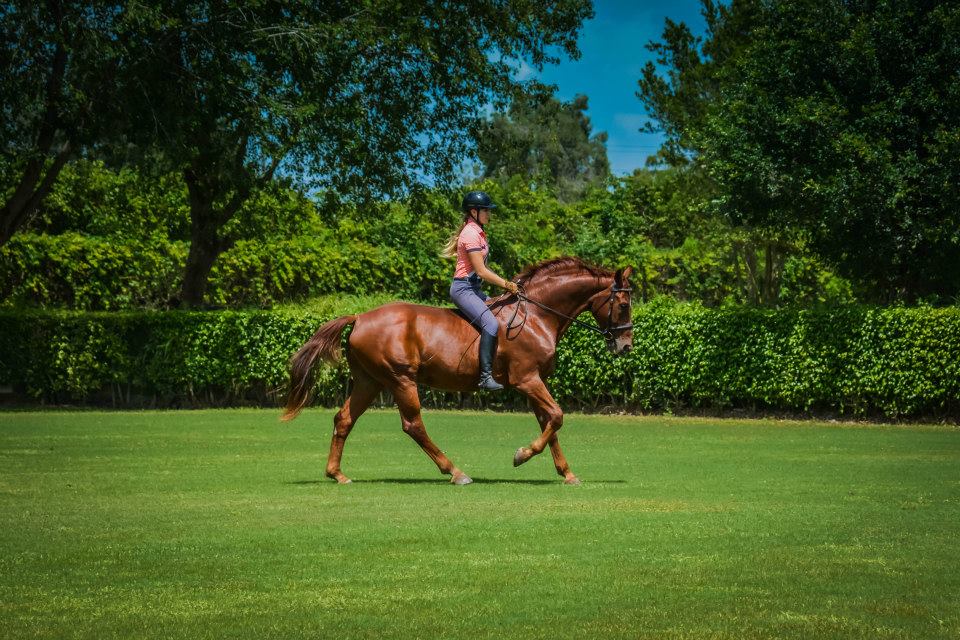
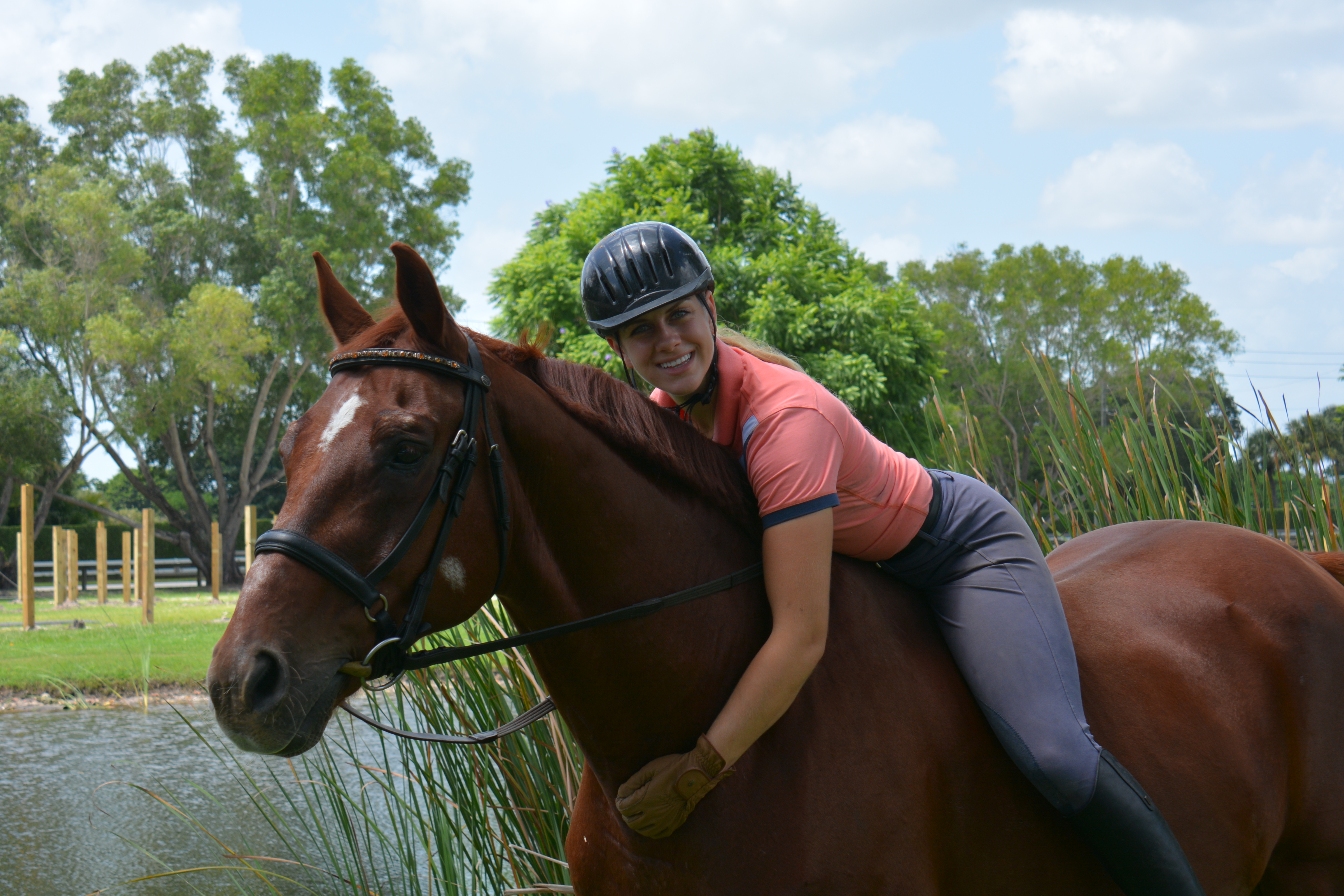
I will be forever grateful to Donner, not only for what he has helped me to accomplish as a rider, but for the life lessons that came with the journey. Perseverance and determination had to be balanced with patience and understanding in order for our relationship to improve. I had to think outside the box to communicate with him and figure out what he needed to be happy in his daily life. He further instilled the idea that we cannot have cookie-cutter training methods, but instead must become better horsemen, listen to our horses and treat them as individuals. He taught me more through his imperfections than through his strengths.

I was convinced I could draw out the magnificent athlete that existed somewhere within that skeleton of a horse, and no matter what, Donner was worth the risk. The rewards he provided were far greater than I could have dreamed and I am honored to be able to give him the life he has always deserved for the rest of his days.
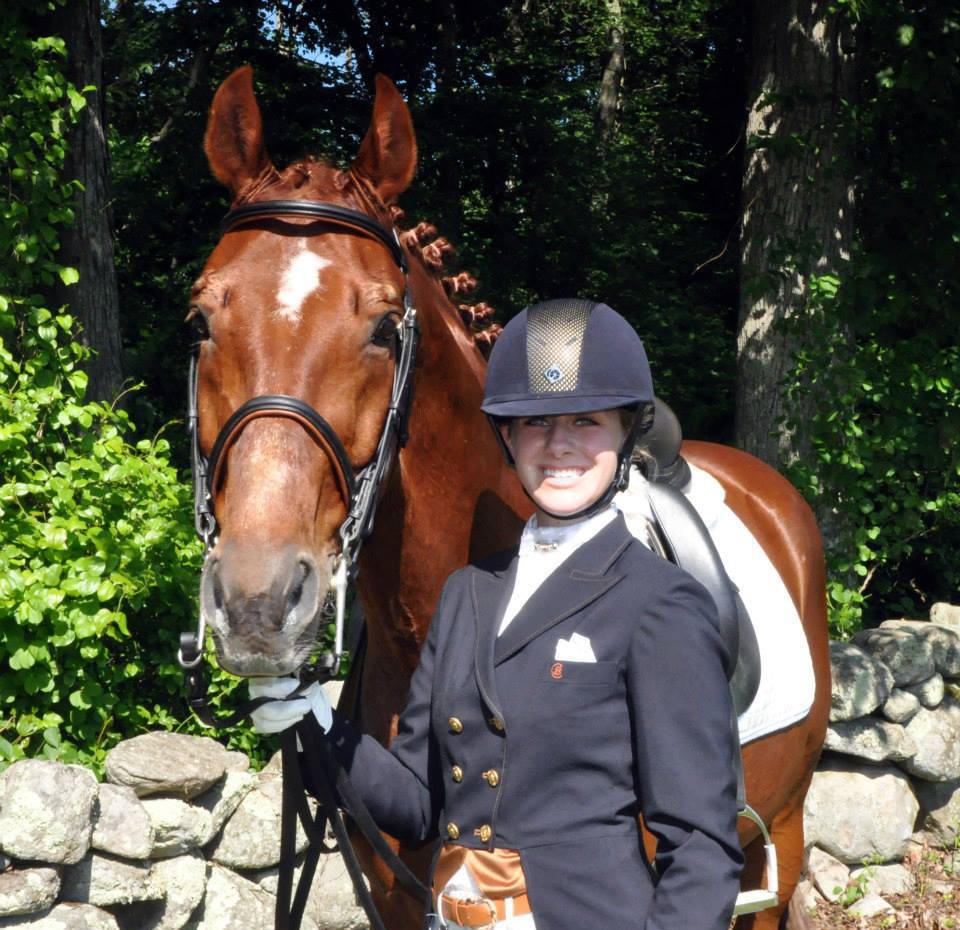
Laura Ashley Killian is a USDF bronze, silver and gold medalist as well as a USDF bronze and silver freestyle bar recipient. She operates her training, lesson and sales program, Laura Ashley Dressage, year-round in Wellington, Florida, where she works with both horses and riders from first ride to FEI.


